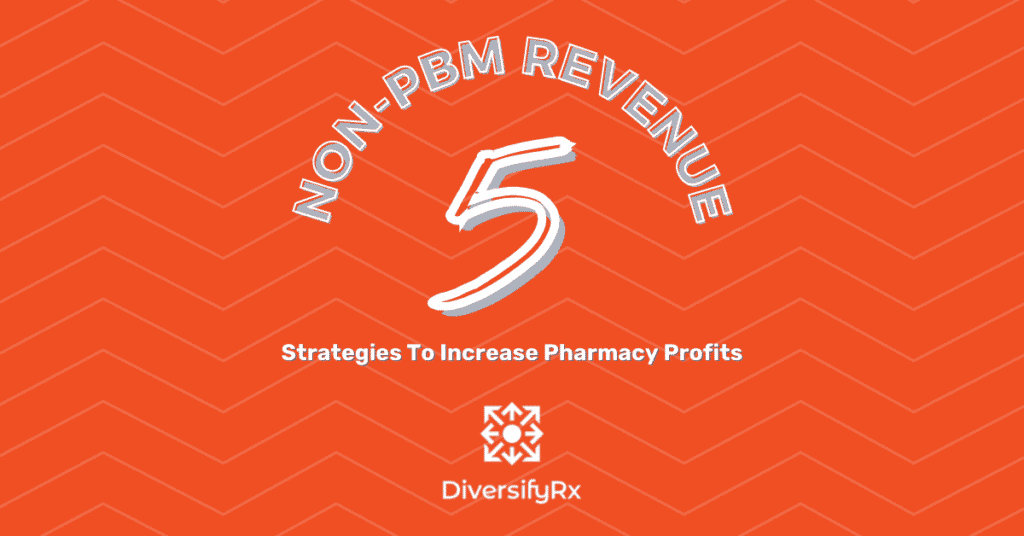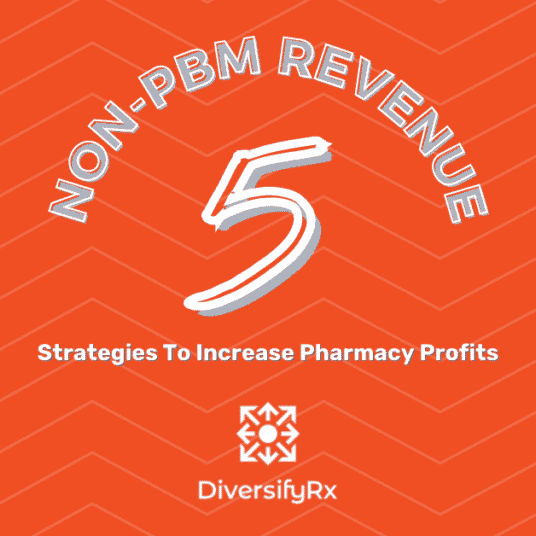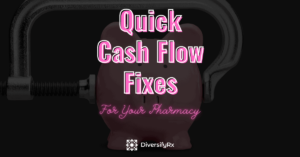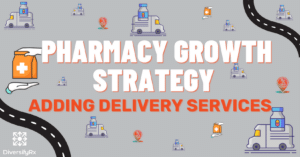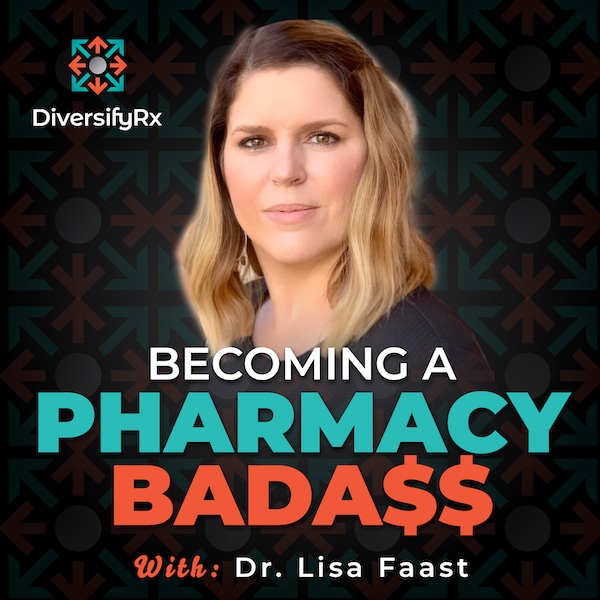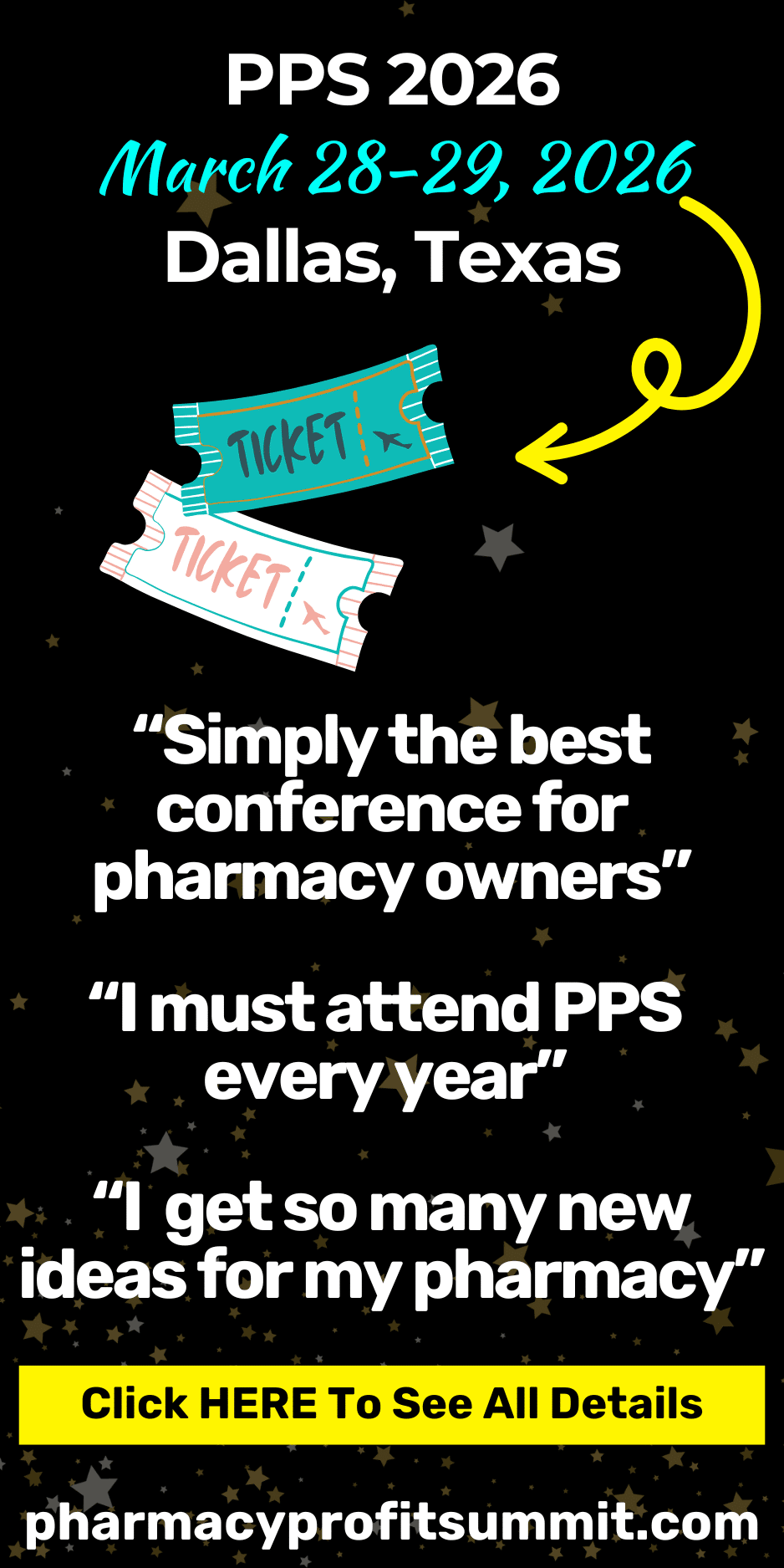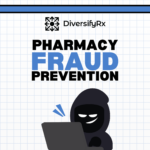Increasing non-PBM Revenue can lessen the stranglehold PBMs have on your pharmacy.
Owning a pharmacy is hard work. What it shouldn’t be is confusing. If you find yourself unsure of what to focus on or how to improve your pharmacy, it is time to go back to the basics. There are only six key areas, pillars if you will, you should focus on to drastically improve your pharmacy profits and lesson the confusion in your pharmacy.
- Cash-Based Revenue
- Non-PBM Revenue
- Optimizing PBM Revenue
- Marketing
- Team Development
- KPI Optimization
Here at DiversifyRx, we firmly believe that diversification is the key to success (it’s in the name!). Pharmacy owners can no longer rely on waiting for what happens to come through the door to generate profitable dispensing revenue. You must actively search out and nurture other revenue and optimization opportunities. Let’s dive into non-PBM revenue.
Non-PBM Revenue
The description of non-PBM revenue seems simple enough. Income that doesn’t come from a PBM. However, to get more specific, we define it as revenue that you are billing or waiting for payment on and is not from a PBM. For our purposes, non-PBM revenue excludes cash-based revenue.
It is critically important to your survival as a pharmacy owner to increase your percentage of non-PBM revenue as high as you can. When PBMs control over 95% (that’s average) of your revenue, you have lost control of your pharmacy. You are at the mercy of their rules, payments terms, audits, fees, clawbacks, and ever-changing contracts.
What Is Your Percentage?
How much of your revenue comes from a PBM? If you aren’t sure, here is how to calculate it. Run a report from your pharmacy management software for your dispensing history for the last completed month. It should give you the numbers you billed to third parties. Take that number and divide it by your total revenues from the same period. Multiply by 100, and now you have your percentage of revenue from a PBM. If you are similar to other pharmacies, expect this number to be 95% or higher.
Create a goal for your pharmacy for the next quarter for where you want this number to be. You can choose to look at it as revenue from a PBM or, the inverse, non-PBM revenue. For the first quarter, a good goal would be to double your non-PBM revenue. So if you have 5% of revenue from non-PBM resources, set a goal to get to 10% in a quarter. What this could look like.
- Your total annualized revenue is $4 million
- $200,000 or 5% comes from non-PBM sources, which is about $50,000 a quarter
- To get to 10%, you would need $100,000 in the next quarter
- Customize this to your specific situation; doubling may be too aggressive or not enough for you.
How To Increase Your Non-PBM Revenue
Now that you have a goal, you need a plan. Let’s review my current top 5 strategies for increasing your non-PBM revenue. This list is not a suggestion that you do all 5 in the next quarter! You would definitely get overwhelmed trying to do that. Instead, review these options and others you come up with, and choose 1-2 to focus on.
- Direct Bill Worker’s Compensation
- Pharmacogenetic Testing (PGx)
- Remote Patient Monitoring (RPM)
- Medical Billing
- Clinical Collaboration
Pharmacy Profit: Direct Bill Worker’s Compensation
Many pharmacies dumped worker’s comp prescriptions years ago due to the terrible reimbursements. These no-good claims were due to Tmesys, ESI, and many others and not the work comp program in your state. Most work comp programs have very generous reimbursement models. Something akin to AWP, AWP plus, or AWP minus a little. Compare those numbers to the typical PBM contract of AWP minus 87%, and you can start to see why reimbursements became crappy.
A little-known fact is you are not obligated to use a PBM for billing in most states. You, as the provider, can bill directly to the work comp insurer. This direct bill method allows you to get paid in full rather than giving 99% of your profit to the PBM. Through direct billing, you get paid drastically more (yay!), but you have to wait longer for your payment, and there is no guarantee. This trade-off is worth it, especially for low-cost generic drugs.
We recommend Streamcare as a direct billing service provider. While you can do it all on your own, that can be too overwhelming for most pharmacies. Streamcare can do it all for you, and they have a fantastic website that lets you know the status of all claims at any time. To see if you are in a state that qualifies, head over to diversifyrx.com/go-streamcare.
Pharmacy Profit: Pharmacogenetic Testing (PGx)
PGx is the future of healthcare. For medications known to have a drug-DNA interaction, I think it is malpractice not to have a patient’s PGx profile done. Screening a patient’s PGx profile against therapy options can prevent everything from poor therapeutic outcomes to side effects to even death. It breaks my heart every time I hear a preventable tragic patient story. While pharmacists cannot order PGx tests, in most states, you can actively interpret data results and identify higher-risk patients and recommend a test to the prescriber.
Picking The Right Company
There are many good PGx companies out there and some that are not so good. The difference often lies in how they pay pharmacists and providers. Medicare has updated many of the PGx guidelines, and there are several opinion letters to help guide companies. First, you need to know that labs that perform the analysis cannot interpret the results. This rule creates a perfect opportunity for pharmacists to interpret the results for the physician and patient. Secondly, you cannot get paid for not performing a valid service. When PGx first become hot, this was an issue. Money was flying around everywhere, and Medicare did not like that. You are allowed to earn income as long as it is for a bonafide service.
The company I recommend is RxGenomix. They will pay a pharmacist $90 per test interpretation to the prescriber. Their software makes interpreting tests so easy and does all the heavy lifting for you. It is a joy to use. RxGenomix has many programs for patients with or without insurance coverage so that everyone can enjoy the safety of knowing their PGx profile. Use code “rxg115” to save when you sign up for their wonderful CE course. Here are the steps to get started.
- Take the CE course and get certified.
- Get trained on the software.
- Identify prescribers or patients that are a good fit.
- Begin interpreting data and earning extra revenue.
Pharmacy Profit: Remote Patient Monitoring (RPM)
Remote patient monitoring (aka remote physiologic monitoring) has surged in the past year due to Medicare’s updated rules. These new rules allow primary care physicians to outsource the time-consuming and expensive infrastructure needed when offering RPM services to patients. Approximately 90% of Medicare patients qualify for RPM services, but only a tiny fraction receive this vital care. You can help change that.
Not many of these third-party companies have a program that includes the participation of a pharmacist. Frankly, no pharmacist is needed to perform RPM services. We all see the studies that show when a physician and pharmacist collaborate on a patient’s care plan, the results positively speak for themselves. Pharmacists must insert themselves into RPM wherever they can. If you have a pharmacist embedded at a physician’s office, you can participate in the monitoring more actively. For most independent retail pharmacies, this is not an option, and you need another one.
Pharmacy Profit: Medical Billing
Hopefully, pharmacists will gain bonafide provider status at the federal and state levels. This change would allow pharmacists to bill for all the impactful services they provide to patients everywhere. For now, we have to hunt for medical billing opportunities and collaborate with recognized providers.
There are opportunities for pharmacists to bill medical plans for services. It will depend on your state and insurances. If you want to plug into your local area and begin to understand the opportunities, I recommend joining CPESN. For pharmacy owners who wish to go deep into medical billing, I recommend you look into Mobile Mediclaim. They have helped hundreds of pharmacists and pharmacies get contracted and credentialed with plans in their area to bill for services. They walk you through the process of creating a clinic, getting credentialed, signing contracts, negotiating rates, and training you on their EHR and billing. It’s a significant investment with a potentially huge return, not just in revenue but also in expanding your services to your community.
Pharmacy Profit: Clinical Collaboration
My longtime friend and pharmacy industry innovator, Amina Abubakar, has led clinical collaboration for all pharmacists. Her name is synonymous with pharmacist-physician collaboration models. These models include embedding a pharmacist in an office, forming collaborative practice agreements, revenue sharing with physicians, and expanding pharmacist-led care plans. Amina has proven that following the “Amina Way” can lead to multiple six-figures in revenue from a single pharmacist. Amina has created the Avant Institute to help pharmacy owners learn the exact steps they need to follow and provide a framework for support to expand into this clinical area.
Picking A Path
Did any of these strategies catch your eye? Do you have some of your own ideas to increase your non-PBM revenue? I find it helpful to look at a couple of factors when faced with many choices.
- Easy of implementation
- Time until the return on investment
- Impact on my patients
- Impact on my bottom line
When speaking with pharmacy owners, I often recommend the direct billing work comp first. As long as they are in one of the 38 “good states,” this program is easy to implement, doesn’t have any hard costs, and has a massive impact on the bottom line. If you are unsure of where to start, that is an excellent first place. Please reach out to in**@*********rx.com with any questions. For daily pharmacy ownership tips, join our private Facebook Group



